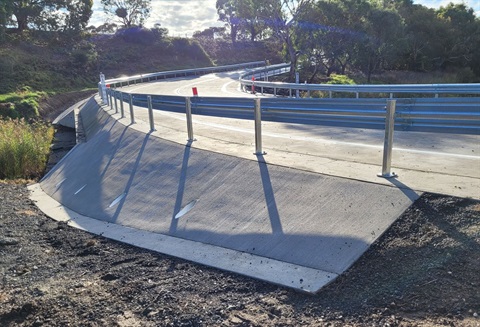Victorian earthquake update: Our customer support and why it happened?

The earthquake that struck Victoria on September 22 2021 was felt across south-east Australia, with seismologists placing its magnitude at 5.9 on the Richter scale, making it the largest recorded earthquake in the state’s history. The epicentre was Mansfield, 115 kilometres north-east of Melbourne, but it was felt as far away as New South Wales and Tasmania.
Our support for customers
Across our brands, we’ve received 954 claims for property damage as a result of the series of earthquakes in Victoria.
Our immediate priority is always to ensure the safety of our customers and we urge everyone to listen to the advice of the emergency authorities and lodge your claim when it is safe to do so.
We encourage our customers with vehicles, homes or businesses that have been damaged to contact us to lodge their claim as soon as possible to access immediate support such as emergency accommodation.
Our partner builders and suppliers are completing emergency Make-Safe repairs in-line with the Victorian Government COVID-19 guidelines and processes.
Our assessors and repairers are also on the ground helping impacted customers who have damage to their properties.
What caused the earthquake and why did it happen?
Dr Phil Conway, Manager, Perils Pricing is one of the experts in IAG’s Natural Perils team which is responsible for understanding extreme weather events and the risks they pose for communities across Australia and New Zealand. This includes understanding how climate change is impacting the severity and frequency of severe weather events today, and what is likely to happen in the future.
Dr Conway explains that the earthquake’s origins can be traced back to our Trans Tasman neighbours in New Zealand.
“Below New Zealand, the Pacific tectonic plate is subsiding beneath the Australian plate causing stress build up across the Australian landmass. In fact, New Zealand is getting closer to us by a few centimetres a year on average and every once in a while, there is a build-up of pressure, that when released suddenly, results in an earthquake,” Dr Conway said.
“Fortunately, larger earthquakes are rare in Australia and when they do happen, the odds of it happening near a populated area is even lower given the size of our country.”

This is the largest magnitude earthquake in recorded history in Victoria. It is certainly not something that’s common.
Dr Phil Conway
Manager, Perils Pricing
Dr Conway said preparedness for earthquakes, however rare, remains an important issue to consider.
“Australia is a land of extremes. Our communities in Australia are exposed to just about every possible hazard and natural disaster, from severe thunderstorms and tropical cyclones to bushfires and devastating floods and as we’ve seen this week, earthquakes. We cannot prevent these events from happening, but we can do more to prepare communities and make them more resilient,” he said.
“The impact of these natural disasters on communities will depend on key factors such as land use planning and building codes and practices, where properties are located, resilience measures and the protective infrastructure in place which can mitigate future impacts.”
How to prepare for aftershocks
Aftershocks may still occur in the coming days or weeks ahead so it’s important to stay alert.
According to Victoria’s State Emergency Service, if you are inside follow this safety advice:
- Drop to the ground; take cover by getting under a sturdy table or other piece of furniture; and hold until the shaking stops.
- If there isn’t a table or desk near you, cover your face and head with your arms and crouch in an inside corner of the building.
- Stay away from glass, windows, outside doors and walls, and anything that could fall, such as lighting fixtures or furniture.
If you’re considering any activities that might put you at risk, such as roofing, cleaning gutters, and other activities that involve the use of ladders, reconsider whether these are essential in the short term.







